Canon EOS M Review
Canon EOS M
Canon's first CSC combines great image quality and responsive touch-screen control to great effect.
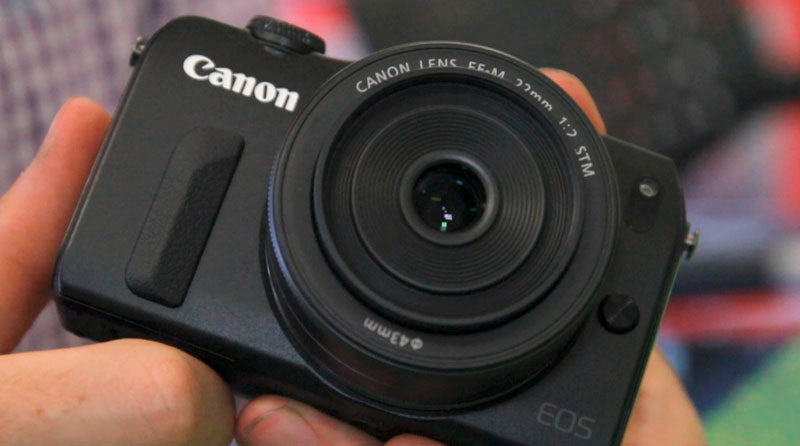
Verdict
Pros
- Responsive touchscreen interface
- Image quality
- Premium build quality
- Generous specification
Cons
- AF and burst shooting could be faster
- Limited number of dedicated lenses
Key Specifications
- Review Price: £699.00
- 18MP APS-C CMOS sensor
- ISO 100-25,600
- 4.3fps burst mode
- 1080p Full HD video capture
- 3.2in, 921k-dot TFT LCD display
The compact system camera market has, by some distance, been the fastest growing segment within the digital camera market in the past few years, and while most of the major manufacturers have rushed to get on board and share the spoils the one notable exception has been Canon. That changed earlier in the year when the company announced it was planning to launch the EOS M. From the beginning Canon has made it quite clear that the EOS M isn’t targeted at traditional or existing Canon DSLR users, but rather at attracting new users into the EOS system, with the camera primarily aimed at novice, first-time users. 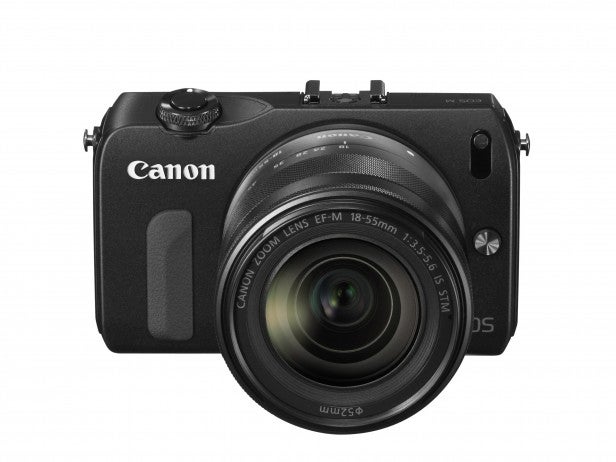
With many of Canon’s chief rivals having already established themselves within the compact system market, and with a good range of novice-friendly CSC models already on the market has Canon left it too late to claim a share of the market, or is the EOS M good enough to carve out a slice for itself? Let’s take a closer look and find out.
Given the launch of the G1 X with it’s almost-but-not-quite APS-C sized 18.7 x 14mm sensor earlier in the year, many expected any compact system offering from Canon to use the same sensor, however this hasn’t actually turned out to be the case. Instead, Canon has opted to fit the EOS M with a full-sized 22.3 x 14.9mm APS-C CMOS sensor – the same size that’s found inside all of its low to mid-range DSLRs. This is capable of resolving images at 18MP for a maximum output of 5184 x 3456 pixels.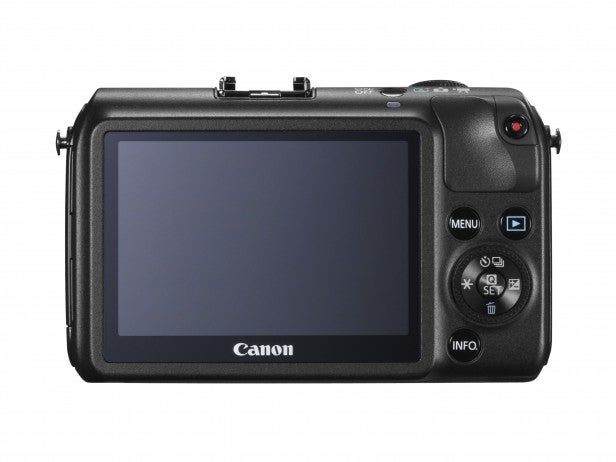
The EOS M also uses Canon’s latest 14-bit DIGIC 5 image processor to supply the processing power. Sensitivity is identical to that of the EOS 650D, with a standard range of ISO 100-12,800, which is expandable by a further stop to the equivalent of ISO 25,600. The EOS M is capable of shooting at a top continuous speed of at 4.3fps, however compared to the 10fps of the Sony NEX-5R’s or the 8fps or the Samsung NX210 this isn’t particularly fast.
While the EOS M employs the same image sensor format as Canon’s APS-C DSLR range, it doesn’t use the same EF-S lens mount. Instead it uses the new EF-M mount, which has a flange distance of 18mm (compared to 44mm of EF-S cameras). The upshot of this is that you’ll need to use dedicated EF-M lenses, or shell out an extra £130 for the official Canon EF-M to EF-S lens adaptor. To date, Canon offers two dedicated EF-M lenses – the EF-M 18-55mm f/3.5-5.6 IS STM standard zoom and the EF-M 22mm f/2 STM. The STM refers to the stepper motor used to drive the autofocus, which is designed to be quieter during video capture. 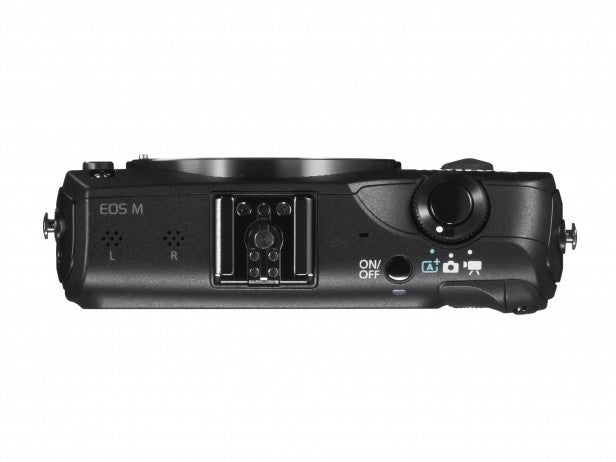
On the back you’ll find a 3in, 1040k-dot 3:2 ClearView II LCD monitor that offers touch-screen control over the camera. There’s no built-in flash, although a small Speedlite 90EX is supplied with the camera, which slots onto the hot-shoe. Unfortunately the hot-shoe doesn’t double up as an accessory port so there’s no way to attach an electronic viewfinder should you want to so you’ll have to rely solely on the rear monitor to frame and review your shots with.
The EOS M employs a 31-point Hybrid AF system that combines contrast and phase-detection AF. The way this works is that the faster phase-detect AF points are used to acquire initial focus, which is then fine-tuned by the more precise contrast-detect system. There’s a generous selection of AF modes to choose from that includes Face Detection, AF tracking, FlexiZone-Multi and Flexizone-Single. The EOS M’s touchscreen functionality also allows you to employ Touch AF, and to do this you simply touch the part of the screen you want the camera to focus on. 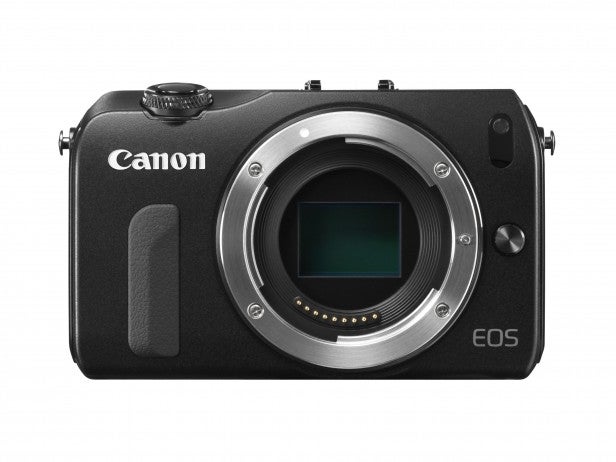
In addition to the regular creative quartet of Program, Aperture-priority, Shutter-priority and Manual (PASM) exposure modes, the EOS M also offers a number of fully automated modes. Scene Intelligent Auto uses scene recognition technology to adjust the camera settings according to the scene before it, although you can also choose from a range of seven individual Scene modes too. In addition, the EOS M also offers a range of Creative filters that can be used to apply digital effects such as Toy camera, Grainy B/W and Fisheye.
In terms of movie recording options the EOS M can record video at 1080p Full HD, with a choice of 30, 25 or 24fps. Should you want to slow the action down, you can also opt to shoot 720p HD video at 60 or 50fps. Audio is recorded in stereo by default, and there’s also the option to attach an optional stereo microphone via a 3.5mm socket on the side of the camera.
The EOS M inherits the same clean, unfussy design seen on the majority of PowerShot and models – irrespective of the embossed branding there’s no mistaking it for a Canon camera. Edges are soft and curved, and the EOS M’s main design cue is the sculptured indent around the shutter button. This has enabled Canon to set the shutter button at a slight angle, which results in a slightly more comfortable shooting position when holding the camera. 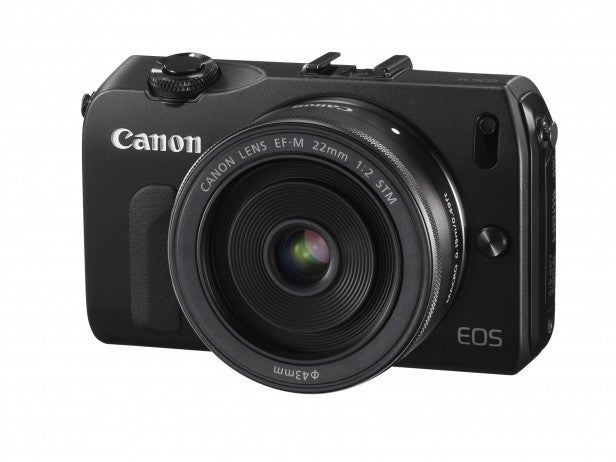
In terms of its overall size the EOS M is similar to Nikon’s J1 and J2 models. The camera lacks a proper handgrip although there is a small, low profile rubberised grip on the front along with a curved thumb rest on the back. Together these actually allow you to get a pretty good grip of the camera. Overall build quality is very good too, with much of the body constructed from magnesium alloy. This helps to provide a reassuring weight and quality feel to the camera.
Physical controls are kept to a minimum, with the rear touchscreen used to control many of the camera settings instead. The exposure mode dial is located on the top-plate, while on the back you’ll find a one-touch movie record button along with dedicated Menu, Playback and Info buttons. As is common to Canon cameras there’s also a four-way directional pad that can be used to access EV compensation, Drive Mode and Auto Exposure. The Delete button doubles up as a quick way of returning the AF point to the centre of the frame. 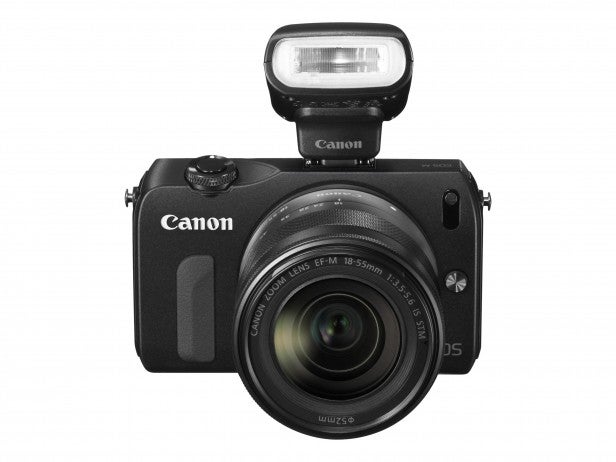
While many of the camera touchscreens we’ve reviewed in the past have left a lot to be desired with unresponsive screens, the EOS M’s has to be one of, if not the most responsive we’ve yet tested, with the 3in, screen registering even the lightest of touches. In addition, it’s also possible to swipe, pinch and zoom in on an image just as you would on a smartphone. To say we’re impressed would be putting it mildly.
Alongside the EOS M’s neatly laid out interface the screen’s responsiveness results in a camera that’s really intuitive and fun to use. If you don’t want to delve through the in-camera menus then there’s a handy on-screen Quick Menu button that will let you change a host of key settings. The on-screen menu icons are generally large enough to press first time too, without the need for pinpoint accuracy or a stylus! On top of this the screen itself offers plenty of clarity and contrast and provides good viewing angles too. We also like how the 3:2 aspect matches that of the sensor, which means that still images will fill the whole of the screen when viewed in playback mode. 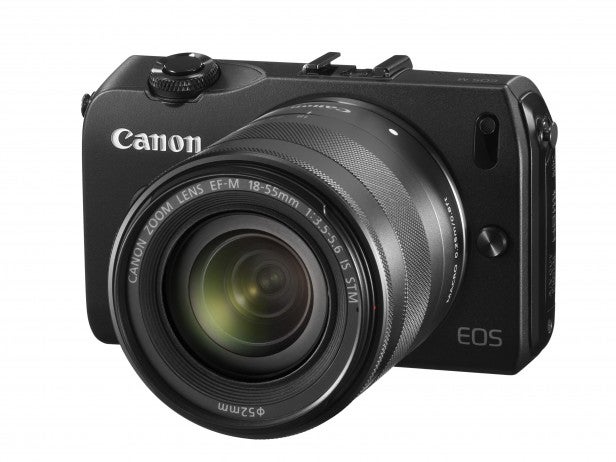
One thing that is missing that we would quite liked to have seen is the ability to double tap images in Playback mode to review them at 100%. Also there’s a slight delay before images are rendered at full quality as you’re flicking through your images, which can be slightly annoying if you’re in a hurry. That aside, it has to be said that EOS M’s blend of responsive touchscreen and intuitive interface delivers a fast and seamless user experience.
While the EOS M’s Hybrid AF system isn’t quite as fast as some of its CSC rivals – we’re thinking primarily of the Lumix G-series and the Olympus PEN range here – there’s still very little to moan about. Focus lock is still impressively quick and very rarely finds itself hunting for focus. The Stepper Motor is barely audible in general use too, with a smooth transitional focus during video recording. 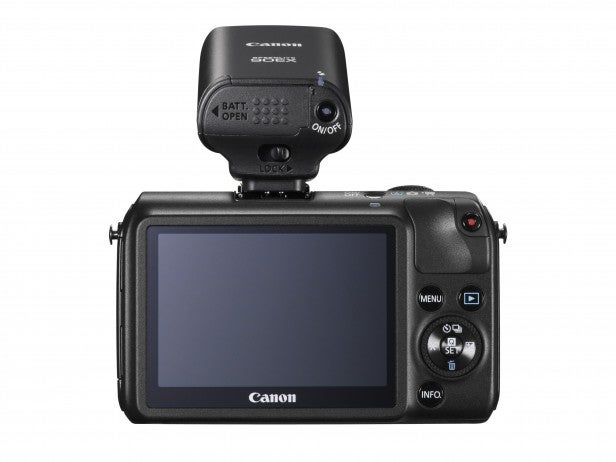
Selecting an AF point while the camera is being used in FlexiZone Single mode couldn’t be easier, with the touchscreen allowing you to pinpoint where you want to focus, and if you wish, trigger the shutter too. Should you want to revert to the central AF point then it’s as simple as hitting the Delete button. The EOS M’s focus-tracking mode does a pretty good job, although like many other CSCs, it does begin to struggle when faced with a fast-moving subject.
Shooting at the EOS M’s top burst speed of 4.3fps we were only able to capture 11 consecutive JPEGs (or five Raw images) before the buffer filled and the frame rate dropped to well below the headline rate. The EOS M is also a touch slow to start-up, with a 2-3 second delay from switching the camera on until it’s ready for you to start shooting. 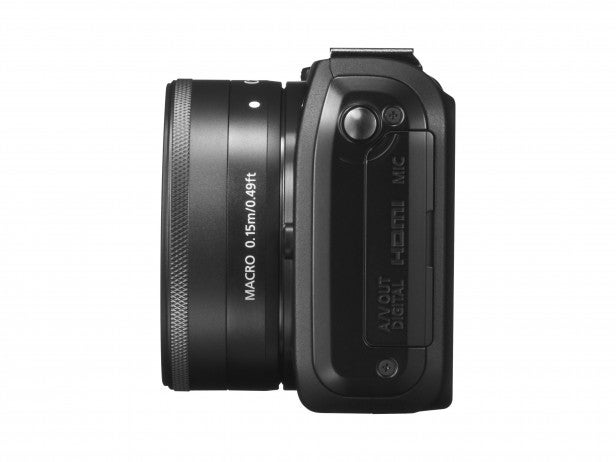
As might be expected from an APS-C camera manufactured by Canon, overall image quality is very good indeed. Metering remains consistent across a range of conditions, with the camera delivering pleasingly accurate results. We did find that, occasionally, when shooting high-contrast scenes that there was a tendency for the EOS M to slightly underexpose, however this was nothing a bit of on-the-spot exposure compensation couldn’t fix.
The EOS M benefits from the same Auto Lighting Optimizer technology that’s found in Canon DSLRs. This essentially employs in-camera processing to balance highlight and shadow areas. You can choose from Low, Standard or High options – or you can switch it off altogether. It can be useful when faced with high-contrast scenes, although be warned that the High setting can result in something not akin to an HDR effect.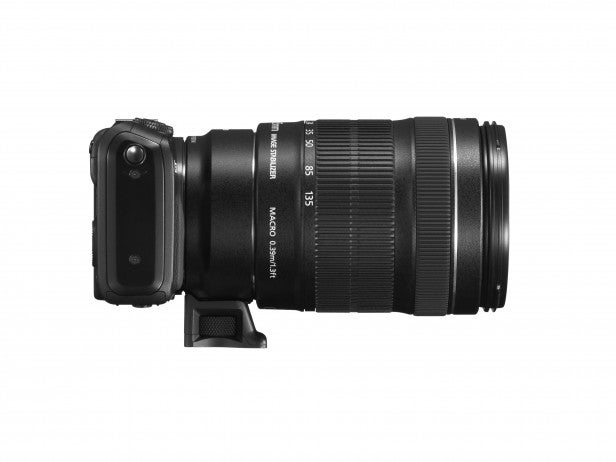
With its 18MP APS-C sensor the EOS M is able to resolve good levels of detail. As with Canon DSLRs T
The EOS M’s anti-shake system is of the lens-based variety (rather than sensor-shift). Thankfully the bundled 18-55mm EF-M kit lens has this IS technology built-in, effectively giving you an extra four stops to combat the effects of camera shake with. It’s worth noting, however, that the 22mm pancake lens doesn’t offer IS.
Noise is very well controlled too. From the baseline sensitivity of ISO 100 up to ISO 800 images are pretty much noise free. Above ISO 800 and image noise does become progressively more noticeable. ISO 6400 is just about acceptable, although colour noise does see the image deteriorate quite a bit. 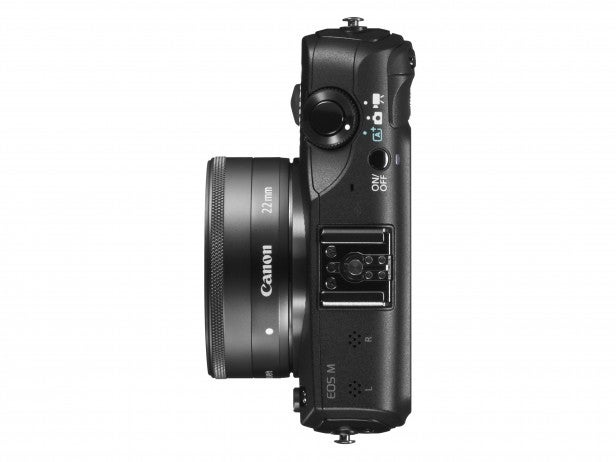
Comparing unprocessed Raw files to their processed JPEG counterparts reveals that JPEGs have a touch more contrast and slightly punchier colours. At higher ISO settings, JPEGs also exhibit less in the way of noise thanks to the application of noise reduction at the processing stage. This results in smoother images, albeit at the expense of sharpness. At these sensitivities it makes more sense to shoot in Raw if possible, and then process the image yourself.
Automatic white balance delivers generally neutral results under both natural and artificial light sources, although it can be a little cool on occasion. As with other Canon digital cameras the EOS M offers a selection of Picture Styles to choose from that can be used to accentuate colour saturation and suchlike. The ‘Standard’ setting delivers pleasing results though.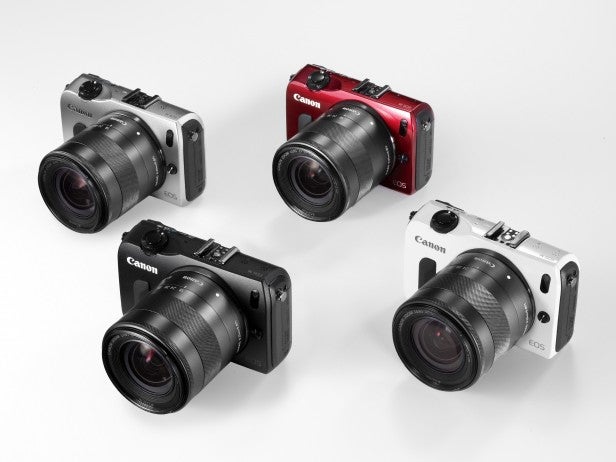
Verdict
The Canon EOS M is one of the most capable and easy to use CSCs we’ve tested. It’s also a very well specified camera, with plenty to keep both entry-level and more experienced users happy. Image quality is some of the best we’ve yet seen in a CSC and certainly a match for many DSLRs. What really sets the EOS M apart from its rivals though is the fantastically responsive touchscreen interface, which is by some distance the best in its class. Of course, there’s still some room for improvement; AF speed and burst shooting could both be faster, and at present the range of EF-M lenses is currently a bit limited at just two. That said, we fully expect to see Canon expand the EF-M range in the near future and for an extra £130 you can always buy an EF-M adaptor that will enable you to use regular EF and EF-S lenses.

1/250sec @ f/5.6, ISO 400, 82mm
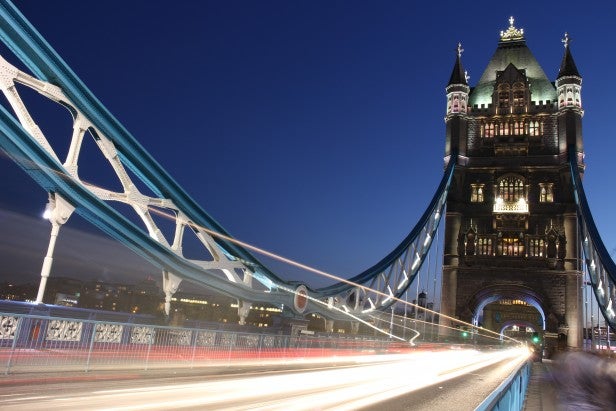
13secs @ f/13, ISO 100, 24mm

1/200sec @ f/6.3, ISO 100, 24mm

1/1250sec @ f/11, ISO 100, 82mm

1/800sec @ f/6.3, ISO 100, 45mm
Trusted Score
Score in detail
-
Value 7
-
Design & Features 8
-
Image Quality 8
-
Build Quality 8
Features
| Camera type | Mirrorless Camera |
| Megapixels (Megapixel) | 18.5 Megapixel |
| Optical Zoom (Times) | Interchangablex |
| Image Sensor | APS-C (22.3 x 14.9mm) |
| Optical focal length | Interchangeable |
| Shutter speed | 30 - 1/4000 |
| Auto focus | 31 points + phase detection pixels built into sensor |
| Manual focus | Yes, depending on lens |
| Max output resolution | 18.0 |
| Focus range | Lens Dependent |
| Exposure metering | EV 1-20 (at 23°C with EF-M 22mm f/2 STM ISO100) |
| Exposure compensation | +/-3 EV in 1/3 or 1/2 stop increments |
| Image Stabilisation | Lens Dependent |
| ISO settings | AUTO(100-6400), 100-12800 in 1-stop increments ISO can be expandable to H: 25600 |
| LCD Monitor | 3in, 1040k dot |
| Viewfinder | No |
| Flash range | Flash Dependent |
| White balance modes | "AWB, Daylight, Shade, Cloudy, Tungsten, White Fluorescent light, Flash, Custom White balance compensation: 1. Blue/Amber +/-9 2. Magenta/ Green +/-9" |
| Video (max res/format) | 1080p @ 30fps, h.264 |
| Memory card slot | SDXC |
| Batteries supplied | Yes |
| Charger supplied | Yes |
| Charging/Computer Connection | microUSB |
| HDMI | Yes |
Physical Specifications
| Dimensions Width (Millimeter) | 108.6mm |
| Depth (Millimeter) | 32.3mm |
| Length (Millimeter) | 66.5mm |
| Weight (body only) (Kilogram) | 298kg |

